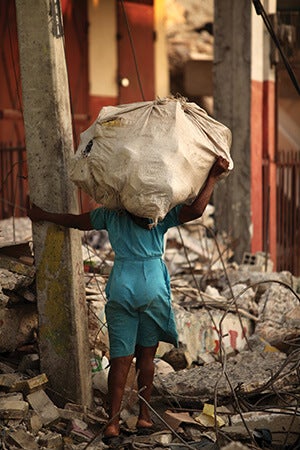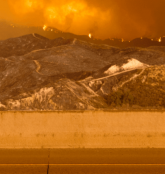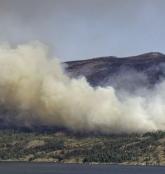As international efforts grow to minimize the disproportionate impact of disasters on specific parts of society, EXPOSURE looks at how close public/private collaboration will be critical to moving forward
 There is a widely held and understandable belief that large-scale disasters are indiscriminate events. They weigh out devastation in equal measure, irrespective of the gender, age, social standing or physical ability of those impacted.
There is a widely held and understandable belief that large-scale disasters are indiscriminate events. They weigh out devastation in equal measure, irrespective of the gender, age, social standing or physical ability of those impacted.
The reality, however, is very different. Catastrophic events expose the various inequalities within society in horrific fashion. Women, children, the elderly, people with disabilities and those living in economically deprived areas are at much greater risk than other parts of society both during the initial disaster phase and the recovery process.
Cyclone Gorky, for example, which struck Bangladesh in 1991, caused in the region of 140,000 deaths — women made up 93 percent of that colossal death toll. Similarly, in the 2004 Indian Ocean Tsunami some 70 percent of the 250,000 fatalities were women.
Looking at the disparity from an age-banded perspective, during the 2005 Kashmir Earthquake 10,000 schools collapsed resulting in the deaths of 19,000 children. Children also remain particularly vulnerable well after disasters have subsided. In 2014, a study by the University of San Francisco of death rates in the Philippines found that delayed deaths among female infants outnumbered reported typhoon deaths by 15-to-1 following an average typhoon season — a statistic widely attributed to parents prioritizing their male infants at a time of extreme financial difficulty.
And this disaster disparity is not limited to developing nations as some may assume. Societal groups in developed nations can be just as exposed to a disproportionate level of risk.
During the recent Camp Fire in California, figures revealed that residents in the town of Paradise aged 75 or over were 8 times more likely to die than the average for all other age bands. This age-related disparity was only marginally smaller for Hurricane Katrina in 2005.
The Scale of the Problem
These alarming statistics are now resonating at the highest levels. Growing recognition of the inequalities in disaster-related fatality ratios is now influencing global thinking on disaster response and management strategies. Most importantly, it is a central tenet of the Sendai Framework for Disaster Risk Reduction 2015–2030, which demands an “all-of-society engagement and partnership” to reduce risk that encompasses those “disproportionately affected by disasters.”
Yet a fundamental problem is that disaggregated data for specific vulnerable groups is not being captured for the majority of disasters.
“There is a growing acknowledgment across many nations that certain groupings within society are disproportionately impacted by disasters,” explains Alison Dobbin, principal catastrophe risk modeler at RMS. “Yet the data required to get a true sense of the scale of the problem simply isn’t being utilized and disaggregated in an effective manner post-disaster. And without exploiting and building on the data that is available, we cannot gain a working understanding of how best to tackle the multiple issues that contribute to it.”
The criticality of capturing disaster datasets specific to particular groups and age bands is clearly flagged in the Sendai Framework. Under the “Guiding Principles,” the document states: “Disaster risk reduction requires a multi-hazard approach and inclusive risk-informed decision-making based on the open exchange and dissemination of disaggregated data, including by sex, age and disability, as well as on easily accessible, up-to-date, comprehensible, science-based, non-sensitive risk information, complemented by traditional knowledge.”
Gathering the Data
Effective data capture, however, requires a consistent approach to the collection of disaggregated information across all groups — first, to understand the specific impacts of particular perils on distinct groups, and second, to generate guidance, policies and standards for preparedness and resilience that reflect the unique sensitivities.
While efforts to collect and analyze aggregated data are increasing, the complexities involved in ascertaining differentiated vulnerabilities to specific groups are becoming increasingly apparent, as Nicola Howe, lead catastrophe risk modeler at RMS, explains.
“We can go beyond statistics collection, and model those factors which lead to discriminative outcomes”
Nicola Howe
RMS
“You have to remember that social vulnerability varies from place to place and is often in a state of flux,” she says. “People move, levels of equality change, lifestyles evolve and the economic conditions in specific regions fluctuate. Take gender-based vulnerabilities for example. They tend not to be as evident in societies that demonstrate stronger levels of sexual equality.
“Experiences during disasters are also highly localized and specific to the particular event or peril,” she continues. “There are multiple variables that can influence the impact on specific groups. Cultural, political and economic factors are strong influencers, but other aspects such as the time of day or the particular season can also have a significant effect on outcomes.”
This creates challenges, not only for attributing specific vulnerabilities to particular groups and establishing policies designed to reduce those vulnerabilities, but also for assessing the extent to which the measures are having the desired outcomes.
Establishing data consistency and overcoming the complexities posed by this universal problem will require the close collaboration of all key participants.
“It is imperative that governments and NGOs recognize the important part that the private sector can play in working together and converting relevant data into the targeted insight required to support effective decision-making in this area,” says Dobbin.
A Collective Response
 At time of writing, Dobbin and Howe were preparing to join a diverse panel of speakers at the UN’s 2019 Global Platform for Disaster Risk Reduction in Switzerland. This year’s convening marks the third consecutive conference at which RMS has participated. Previous events have seen Robert Muir-Wood, chief research officer, and Daniel Stander, global managing director, present on the resilience dividend andrisk finance.
At time of writing, Dobbin and Howe were preparing to join a diverse panel of speakers at the UN’s 2019 Global Platform for Disaster Risk Reduction in Switzerland. This year’s convening marks the third consecutive conference at which RMS has participated. Previous events have seen Robert Muir-Wood, chief research officer, and Daniel Stander, global managing director, present on the resilience dividend andrisk finance.
The title of this year’s discussion is “Using Gender, Age and Disability-Responsive Data to Empower Those Left Furthest Behind.”
“One of our primary aims at the event,” says Howe, “will be to demonstrate the central role that the private sector, and in our case the risk modeling community, can play in helping to bridge the data gap that exists and help promote the meaningful way in which we can contribute.”
The data does, in some cases, exist and is maintained primarily by governments and NGOs in the form of census data, death certificates, survey results and general studies.
“Companies such as RMS provide the capabilities to convert this raw data into actionable insight,” Dobbin says. “We model from hazard, through vulnerability and exposure, all the way to the financial loss. That means we can take the data and turn it into outputs that governments and NGOs can use to better integrate disadvantaged groups into resilience planning.”
But it’s not simply about getting access to the data. It is also about working closely with these bodies to establish the questions that they need answers to. “We need to understand the specific outputs required. To this end, we are regularly having conversations with many diverse stakeholders,” adds Dobbin.
While to date the analytical capabilities of the risk modeling community have not been directed at the social vulnerability issue in any significant way, RMS has worked with organizations to model human exposure levels for perils. Collaborating with the Workers’ Compensation Insurance Rating Bureau of California (WCIRB), a private, nonprofit association, RMS conducted probabilistic earthquake analysis on exposure data for more than 11 million employees. This included information about the occupation of each employee to establish potential exposure levels for workers’ compensation cover in the state.
“We were able to combine human exposure data to model the impact of an earthquake, ascertaining vulnerability based on where employees were likely to be, their locations, their specific jobs, the buildings they worked in and the time of day that the event occurred,” says Howe. “We have already established that we can incorporate age and gender data into the model, so we know that our technology is capable of supporting detailed analyses of this nature on a huge scale.”
She continues: “We must show where the modeling community can make a tangible difference. We bring the ability to go beyond the collection of statistics post-disaster and to model those factors that lead to such strong differences in outcomes, so that we can identify where discrimination and selective outcomes are anticipated before they actually happen in disasters. This could be through identifying where people are situated in buildings at different times of day, by gender, age, disability, etc. It could be by modeling how different people by age, gender or disability will respond to a warning of a tsunami or a storm surge. It could be by modeling evacuation protocols to demonstrate how inclusive they are.”
Strengthening the Synergies
A critical aspect of reducing the vulnerability of specific groups is to ensure disadvantaged elements of society become more prominent components of mitigation and response planning efforts. A more people-centered approach to disaster management was a key aspect of the forerunner to the Sendai Framework, the Hyogo Framework for Action 2005–2015. The plan called for risk reduction practices to be more inclusive and engage a broader scope of stakeholders, including those viewed as being at higher risk.
This approach is a core part of the “Guiding Principles” that underpin the Sendai Framework. It states: “Disaster risk reduction requires an all-of-society engagement and partnership. It also requires empowerment and inclusive, accessible and non-discriminatory participation, paying special attention to people disproportionately affected by disasters, especially the poorest. A gender, age, disability and cultural perspective should be integrated in all policies and practices, and women and youth leadership should be promoted.”
The Framework also calls for the empowerment of women and people with disabilities, stating that enabling them “to publicly lead and promote gender equitable and universally accessible response, recovery, rehabilitation and reconstruction approaches.”
This is a main area of focus for the U.N. event, explains Howe. “The conference will explore how we can promote greater involvement among members of these disadvantaged groups in resilience-related discussions, because at present we are simply not capitalizing on the insight that they can provide.
“Take gender for instance. We need to get the views of those disproportionately impacted by disaster involved at every stage of the discussion process so that we can ensure that we are generating gender-sensitive risk reduction strategies, that we are factoring universal design components into how we build our shelters, so women feel welcome and supported. Only then can we say we are truly recognizing the principles of the Sendai Framework.”



 There is a widely held and understandable belief that large-scale disasters are indiscriminate events. They weigh out devastation in equal measure, irrespective of the gender, age, social standing or physical ability of those impacted.
There is a widely held and understandable belief that large-scale disasters are indiscriminate events. They weigh out devastation in equal measure, irrespective of the gender, age, social standing or physical ability of those impacted. At time of writing, Dobbin and Howe were preparing to join a diverse panel of speakers at the UN’s 2019 Global Platform for Disaster Risk Reduction in Switzerland. This year’s convening marks the third consecutive conference at which RMS has participated. Previous events have seen Robert Muir-Wood, chief research officer, and Daniel Stander, global managing director, present on the resilience dividend andrisk finance.
At time of writing, Dobbin and Howe were preparing to join a diverse panel of speakers at the UN’s 2019 Global Platform for Disaster Risk Reduction in Switzerland. This year’s convening marks the third consecutive conference at which RMS has participated. Previous events have seen Robert Muir-Wood, chief research officer, and Daniel Stander, global managing director, present on the resilience dividend andrisk finance.


